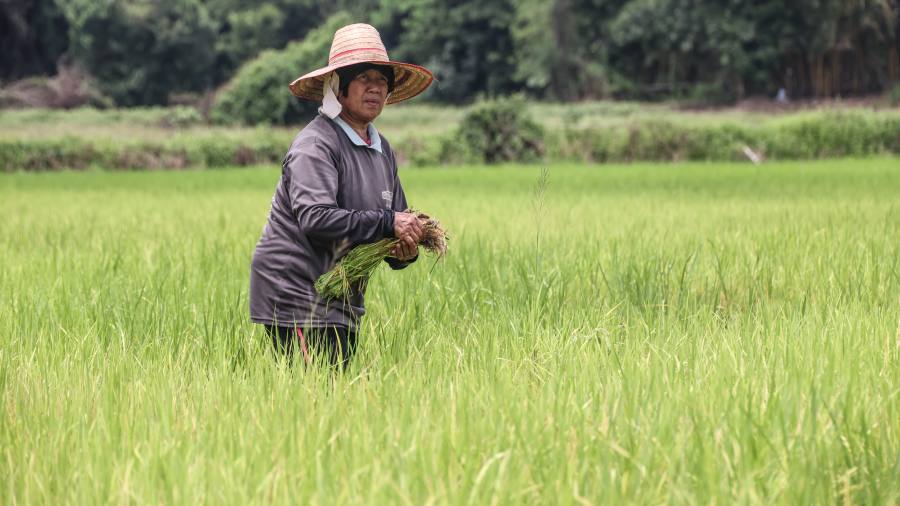Receive free Thailand updates
We’ll send you a myFT Daily Digest email rounding up the latest Thailand news every morning.
Rice trading in Thailand, the world’s second-largest rice exporter after India, has turned chaotic after India’s recent ban on rice exports sparked panic buying. Speculative hoarding has drained supply from the market, leaving less rice available for export.
Thailand’s domestic milled rice prices jumped nearly 20 per cent in mid-August to 21,000 baht ($597) a tonne, up from about Bt17,000 over the previous few weeks.
That has pushed up the Thai export price for benchmark white rice 5 per cent — which includes 5 per cent broken rice — to $610 a tonne, reflecting the rise in global prices, which surged to an 11-year high. Although the Thai government has no plans to limit rice exports, Thai exporters are reluctant to sell owing to uncertainty over supplies.
Thailand normally produces about 20mn tonnes of milled rice, half of which is consumed domestically. The other half is typically exported.
“Thailand has never had tight supplies [up to now], as we have plenty of rice surplus every year,” Chookiat Ophaswongse, honorary president of the Thai Rice Exporters Association, told Nikkei Asia. “But this year, the Thai rice market is in chaos because exporters cannot offer any price quotations as they are concerned about price fluctuations and uncertainty about supply.”
India announced its rice export ban on July 20. The ban caused fears of falling stocks and encouraged large rice importers to seek rice from other key exporters, including Thailand and Vietnam.
Hoarding is expected to push Thai rice prices to uncompetitive levels and prevent Thailand from increasing exports, given India’s absence from the international market. Thai exporters are reluctant to commit to deals if they cannot guarantee delivery at a price that matches earlier commitments. Doing so would inflict an immediate loss, said a trader at a Bangkok-based international trading house.
In addition to the price rises caused by hoarding, the El Niño dry weather pattern is likely to limit the harvest and prevent Thailand from exporting more rice this year and next. Thailand, because of its location, has annual monsoon rains. It is also has extensive irrigation, allowing it to grow rice throughout the year.
However, El Niño is expected to result in less rainfall in September and October, when rice plants need plenty of water. That may lower yields when the crop is brought to market in November. Moreover, lower rainfall is likely to cut water levels at reservoirs, which feed the irrigation system and are crucial to off-season planting.
Precise production estimates are not yet available, but the Ministry of Agriculture recently forecast that Thailand’s 2023/24 crop (November-October) would be lower than expected.
Given tight supplies and hoarding, the Thai Rice Exporters Association maintained its 2023 export target at 8.5mn tonnes as the country was unlikely to be able to take advantage of India’s export ban.
A version of this article was first published by Nikkei Asia on August 17 2023. ©2023 Nikkei Inc. All rights reserved.
Related stories
Read the full article here



